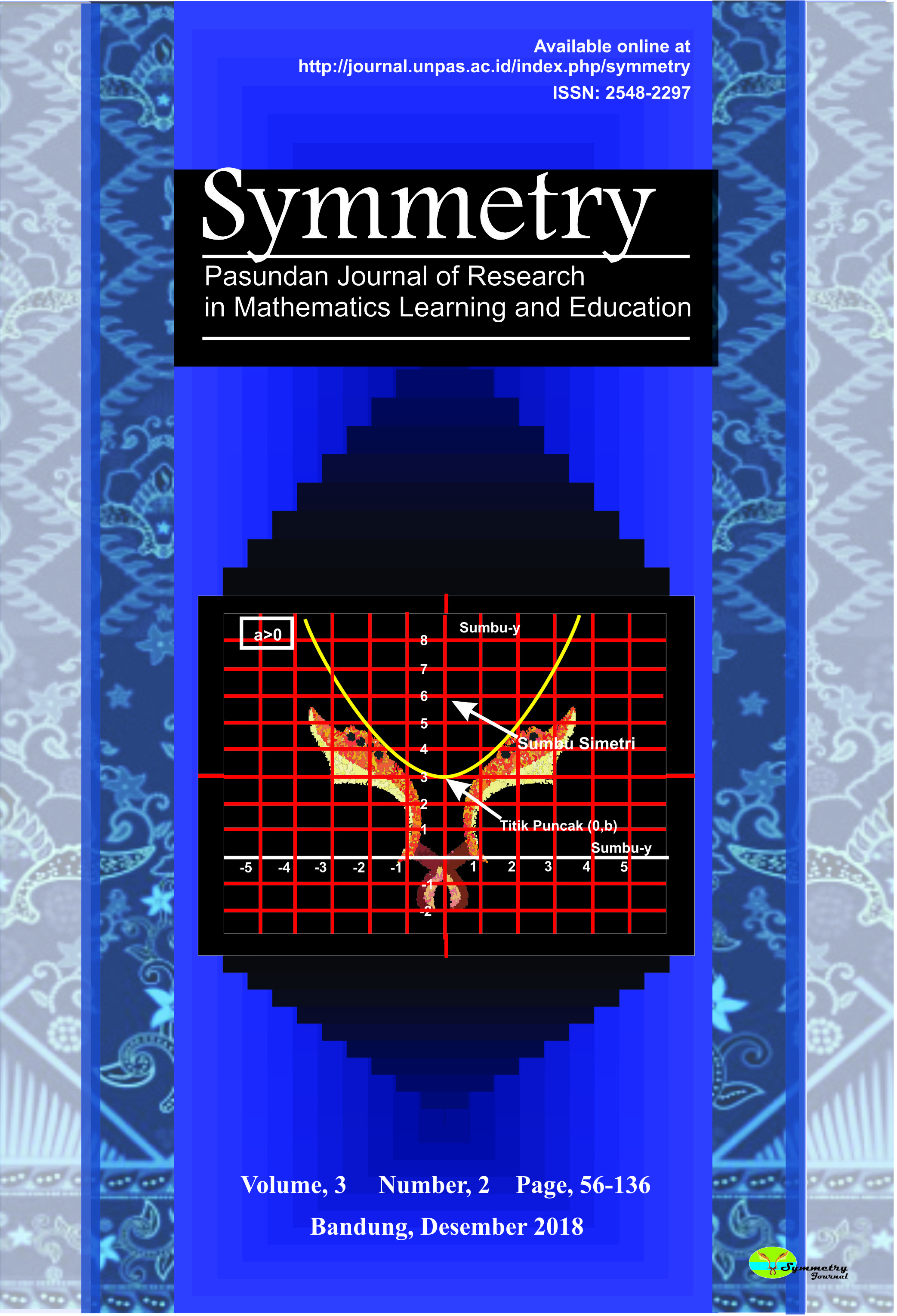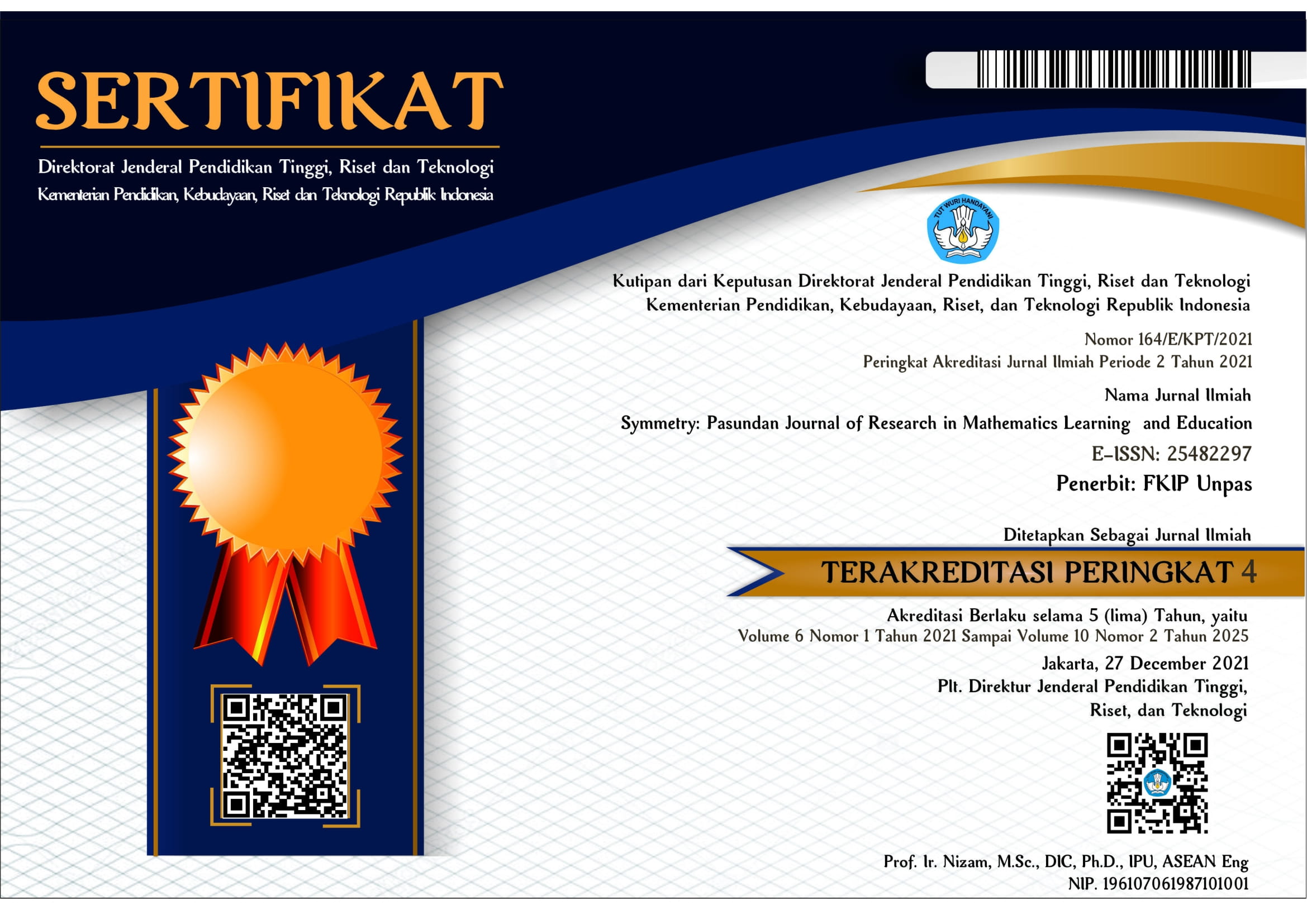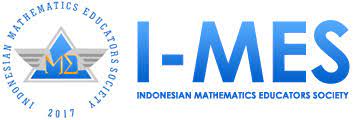ANALISIS KESADARAN MATEMATIS SISWA DALAM PEMBELAJARAN SNOW CUBE THROWING BERBASIS EKSPLORASI
DOI:
https://doi.org/10.23969/symmetry.v6i1.4037Abstract
The snow cube throwing learning model was developed with the aim of making students appreciate the usefulness of mathematics in everyday life. In accordance with the characteristics of this learning model, students are given various types of contextual teaching materials that aim to make students have good mathematical awareness. This study aims to analyze the mathematical awareness of students who receive snow cube throwing (SCTBE) learning based on exploration in terms of school categories. This study is a mix-method study with an explanatory sequential design. The research subjects were students of class VIII from three schools in Cimahi City. The results showed that: (1) SCTBE learning had the same impact on students' mathematical awareness in each school category. In other words, all students who receive SCTBE learning have the same awareness of the usefulness of mathematics in daily life, future studies and careers; and (2) The results of the analysis on each indicator show that the students' mathematical awareness in each school category is classified as good.
Downloads
References
Cajori, F. (1980). A history of mathematics. Chelsea Reprint, 1985, 1991.
Creswell, J. W., & Creswell, J. D. (2015). Research design: qualitative, quantitative, and mixed methods approaches. Sage publications.
Elfiky, I. (2009). Terapi berpikir positif. Penerbit Zaman.
Handayani, U. F. (2020). Analisis hambatan penerapan model pembelajaran kooperatif pada pelajaran matematika. Jurnal Pusaka, 9(2), 22-36.
Johnson, R. B., Onwuegbuzie, A. J., & Turner, L. A. (2007). Toward a definition of mixed methods research. Journal of Mixed Methods Research, 1(2), 112-133.
Kemdikbud. (2013). Diktat guru dalam rangka implementasi kurikulum 2013.
Larsen, J. (2013). Attitude in mathematics: a thematic literature review. British Columbia: Simon Fraser University.
Mensah, J. K., Okyere, M., & Kuranchie, A. (2013). Student attitude towards mathematics and performance: does the teacher attitude matter. Journal of Education and Practice, 4(3), 132-139.
Nickerson, R. (2011). Mathematical reasoning: patterns, problems, conjectures, and proofs. Taylor & Francis.
Noddings, N. (1995). Teaching themes of care. Phi delta kappan, 76(9), 675.
PISA. (2012). Students’engangement, drive and self-beliefs. [online]. Diakses dari http://www.oecd.org/pisa/keyfindings/PISA-2012-results-volume-III.pdf.
Schiefele, U. (2009). Situational and individual interest. Handbook of motivation at school, 197-222.
Townsend, M., & Wilton, K. (2003). Evaluating change in attitude towards mathematics using the ‘then‐now’procedure in a cooperative learning programme. British Journal of Educational Psychology, 73(4), 473-487.
Sari, N. M. (2010). Pengaruh model pembelajaran snow cube throwing terhadap hasil belajar dan minat siswa. (Skripsi). Universitas Pasundan, Bandung.
Stanic, G., & Kilpatrick, J. (1989). Historical perspectives on problem solving in the mathematics curriculum. The Teaching and Assessing of Mathematical Problem Solving, 3, 1-22.
Yacovelli, S. (2005). Will they like it or use it?. Universal-Publishers
Downloads
Published
Issue
Section
License
Hak Cipta sepenuhnya ditangan jurnal.




















